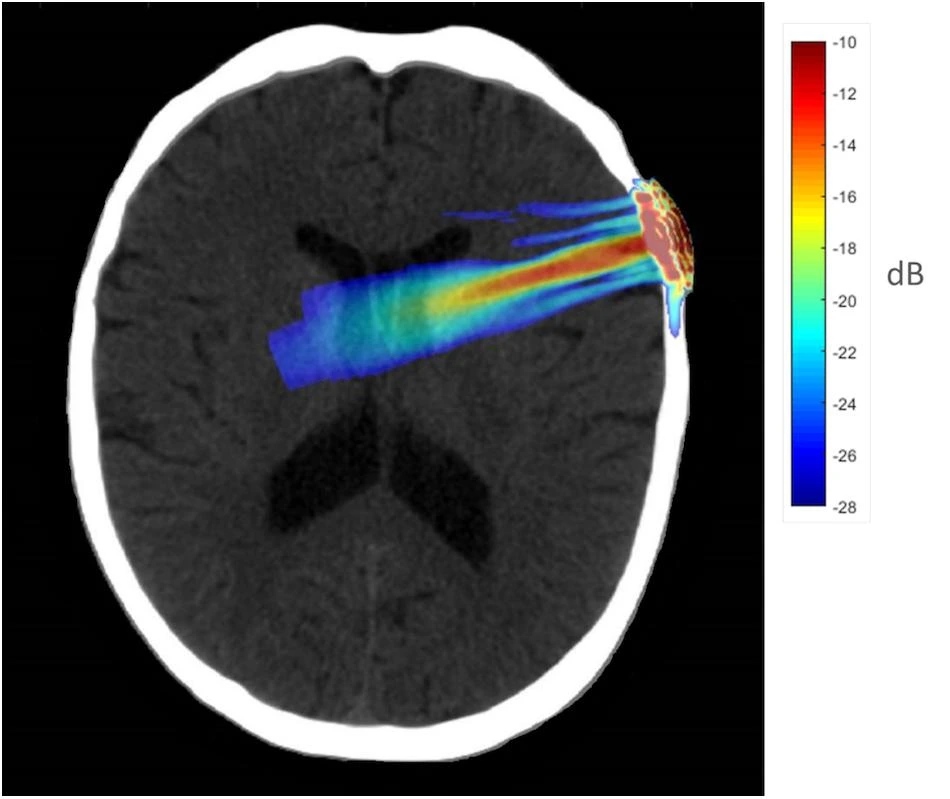
Acoustic simulation model on a representative CT scan of a male patient. The transducer was positioned over the F8 EEG electrode location on the scalp which centers over the rIFG. Hotter colors (red, yellow) indicate more intense sonication, cooler colors (blue, green) indicate less intense sonication.
The Sema Lab
Sonication Enhanced Mindful Awareness
Center for Consciousness Studies, University of Arizona
ORIGINAL RESEARCH ARTICLE
Sanguinetti Joseph L., Hameroff Stuart, Smith Ezra E., Sato Tomokazu, Daft Chris M. W., Tyler William J., Allen John J. B.
Frontiers in Human Neuroscience
28 February 2020
www.frontiersin.org › articles › fnhum.2020.00052 › full
ABSTRACT
Transcranial focused ultrasound (tFUS) is an emerging method for non-invasive neuromodulation akin to transcranial magnetic stimulation (TMS) and transcranial direct current stimulation (tDCS). tFUS offers several advantages over electromagnetic methods including high spatial resolution and the ability to reach deep brain targets. Here we describe two experiments assessing whether tFUS could modulate mood in healthy human volunteers by targeting the right inferior frontal gyrus (rIFG), an area implicated in mood and emotional regulation. In a randomized, placebo-controlled, double-blind study, participants received 30 s of 500 kHz tFUS or a placebo control. Visual Analog Mood Scales (VAMS) assessed mood four times within an hour (baseline and three times after tFUS). Participants who received tFUS reported an overall increase in Global Affect (GA), an aggregate score from the VAMS scale, indicating a positive shift in mood. Experiment 2 examined resting-state functional (FC) connectivity using functional magnetic resonance imaging (fMRI) following 2 min of 500 kHz tFUS at the rIFG. As in Experiment 1, tFUS enhanced self-reported mood states and also decreased FC in resting state networks related to emotion and mood regulation. These results suggest that tFUS can be used to modulate mood and emotional regulation networks in the prefrontal cortex.
Videos
A Technoboost for Meditation | Jay Sanguinetti | TEDxBigSky
Catch the Wave - Ultrasonic Neuromodulation and Higher ...
YouTube · The Transformative Technology Conference
Lecture - Dr. Jay Sanguinetti on brain photobiomodulation and ...
Shinzen Young and Jay Sanguinetti | Awakened Futures ...
